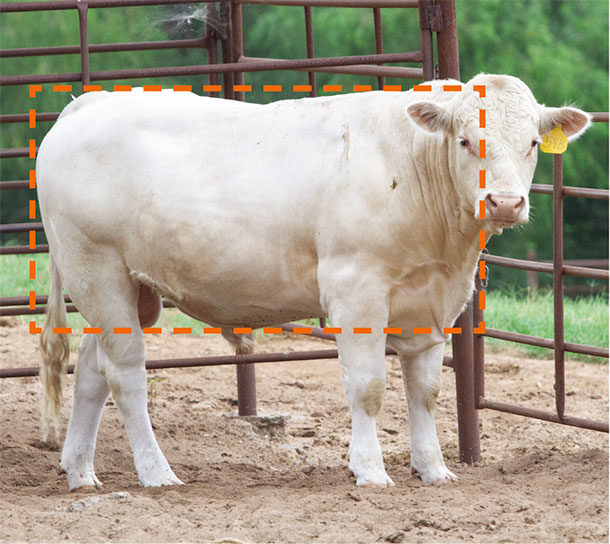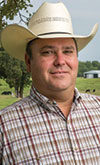A prescribed fire will have an impact on the ranch for three to five years.
In contrast, a bull purchase decision will have an impact on the ranch for as long as his genetics are represented in the herd. If replacements from a particular sire are kept, his influence will outlive him on the ranch. It amazes me that most producers do not put as much thought and effort into sire selection as they will a prescribed fire.
The influence of a sire will have just as much or more of an impact on the ranch economics for years.
Selection decisions
Numerous decisions and processes should occur before writing the check for a new bull. Start early in order to give yourself enough time to work through the process. First, a producer needs to define his or her ranch goals and how the new bull will help to meet those goals. It is difficult for a bull to excel in every trait, and the few that do are too costly for the average commercial cattleman to buy and use for natural service.
Will the bull be used as a terminal or maternal sire? Once the decision is made on how the bull will be used, the producer should pick the breed to use and find the bull within the breed that meets their goals.
After the bull breed has been decided upon, it is time to do the early “homework” before you go to the seller’s ranch. Identify the reputable breeders in your region from whom you might purchase a bull. Request sale catalogs or registration numbers, date of birth and EPDs (expected progeny differences).
The easiest method I have found to handle the large amount of data you will sort through is to develop a spreadsheet with all the data from each bull. This allows you the ability to sort data numerous ways and easily filter out those bulls that do not meet your criteria.
Go to the breed website and look up the percentile rank tables for nonparent bulls. By doing so, you will be able to determine the relative quality of the bull for each trait. This gives you perspective as to how good and bad a bull is for each EPD trait.
I call this process “judging class on paper.” Consider the actual weights, but do not let them solely dictate your final decision. EPDs are more reliable than individual values as management can have a dramatic impact on birth, weaning and yearling weights; marbling scores; and backfat measurements.
Once you arrive on-site, you will now have a short list of bulls to phenotypically consider. Finally, a realistic price should be set on the value of the bulls you will consider. Base your purchase price on how the EPDs of interest will increase your profit potential for that bull. Some traits, like performance traits, are easier to determine the value, such as weaning or yearling weight.
Here is an example of how to place an economic value to a bull. Angus bull A has a weaning weight EPD of 67 (10th percentile). The breed weaning weight average is 52 (50th percentile). Bull A should sire calves that will be 15 pounds heavier than the average Angus bull. This bull will sire 125 calves over five years (bred to 25 cows for five years). Multiply the additional 15 pounds by 125 calves.
The result is an additional 1,875 pounds of weaning weight. If a modest value of gain of $1.35 per pound is used, the additional lifetime weaning weight from the better sire is worth $2,531.
Now, you can add this number to the average price for bulls in your area to determine the maximum bid price for this bull. If the average bull value is $2,250 plus $2,531, the breakeven for this bull would be $4,781. Assuming calves are sold at weaning in this scenario, anything less than $4,781 for the purchase price will be the profit potential of the bull.
The same calculations can be performed for all performance, carcass traits or index traits. This calculation does not take into account the intrinsic additional value you may receive for a better-perceived quality calf, such as selling a No. 1 versus a No. 2 quality calf.
Physical evaluation
Now that the homework is done, it is time to go to the bull sale and evaluate the bulls physically. Only consider the bulls on your short list. Do not deviate from the hard work you have done before sale day. The best bull on paper may be a structural nightmare and should not be bought.
Be extremely critical, and do not allow for deformities or structurally incorrect bulls. When physically judging the bull, start at the hooves and legs, then work your way up to the rest of the body. The bull should have good angles at the fetlock, hocks, shoulder and hip. A bull that has structurally incorrect legs (post-legged, sickle-hocked, etc.) will not last long in the herd.
Move the bull around and make him walk out to ensure he has a smooth, long stride and is not lame. Evaluate him from all sides – front, back and the side. This part is especially difficult with video auctions since most sale videos are short and only provide the side perspective. I once had an order buyer tell me he looks for calves that have “lots of butt and lots of guts.” Find the bull that has the most body capacity and is balanced.
Think of a rectangle. You want the body to be balanced, and as long, deep and wide as possible. You want a bull that will sire this type of calf. Likewise, disposition should be evaluated to ensure the bull will be amicable when you handle him.
Purchase day
Finally, the buyer should consider or beware of certain things when at the sale location. Make sure to pick up any supplemental sale sheets as lot numbers or data associated with a given bull may have changed. Sale day announcements will take precedence over any written information in the catalog.
Confirm the lot number of the bull in the ring before you start bidding, as a lot number may be skipped. Listen closely to the bidding process, as it will move very quickly. If you are not a seasoned bidder, sit close enough to the ring man that he can tell you where the bid price is at – do not hesitate to ask for confirmation.
In addition, for the inexperienced buyer, let another person set the opening bid. Determine the bid increment the auctioneer is using; typically, it will be in increments of $250 or $500. Try to get in on the bidding so you will be able to have the last bid at your maximum price. It is never a good feeling for a bull to sell to someone else at your maximum bid price, as you will wonder if you could have bid that value, would you have been able to get the bull bought.
Additionally, find out if the bull has passed a breeding soundness exam prior to the sale and any other health tests, such as a negative test status for Johne’s disease or persistent infection of bovine viral diarrhea virus (PI-BVDV).
Finally, know what guarantee comes with the bull. Will the seller honor the bull through the first breeding season or first year; if so, for what conditions? Most breed associations define a sound breeding bull as the bull only has to settle one cow in six months’ time. Is this the definition the seller will use, or does he have his own breeding guarantee terms?
Much planning and preparation should go into the purchase of a new bull. When possible, make a planned decision as to when the bull exits your program, and start the search early for his replacement. If you have a spring-breeding herd, when possible, look for his replacement in the fall. This will give you many opportunities to find the right bull at the right price.
Remember, the last bull in the sale is not the last bull for sale in the region. Do not lock yourself into a must-buy situation from any one seller. Doing so will only lead to a costly mistake. Prior planning will result in quality performance of the bull, and you will not be the person who is making a purchase decision “on the fly” while the bull is in the sale ring. ![]()
PHOTO: When observing a bull, try to envision a rectangle. You want the body to be balanced, and as long, deep and wide as possible. You want a bull that will sire this type of calf. Photo courtesy of Noble Research Institute.

-
Robert Wells
- Livestock Consultant
- Noble Research Institute
- Email Robert Wells









